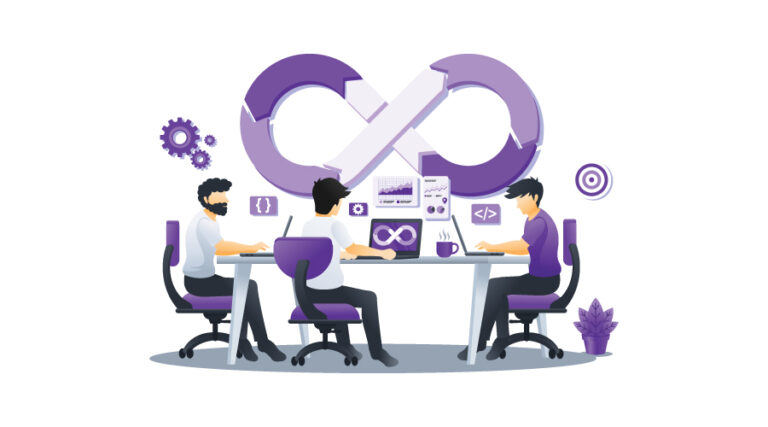At Saturo Academy, our training programs are designed not just to teach, but to transform. By enrolling in our industry-relevant, job-focused IT courses, students gain comprehensive support throughout their learning journey and beyond. Here’s what you can expect:


AWS Cloud Computing Structure
- Week 1: Introduction to Cloud Computing
-
-
Overview of Cloud Computing
- Definition and characteristics of cloud computing.
- Benefits: cost-effectiveness, scalability, flexibility, and accessibility.
- Types of cloud services: IaaS, PaaS, SaaS.
-
Cloud Deployment Models
- Public, Private, Hybrid, and Community clouds: differences and use cases.
- Introduction to the Shared Responsibility Model.
-
Overview of Cloud Computing
- Week 2: Introduction to AWS
-
- AWS Overview
- Understanding the global infrastructure of AWS, including regions and availability zones.
- Exploring AWS Management Console, CLI, and SDKs.
- Getting Started with AWS
- Creating an AWS account and navigating the AWS console.
- Overview of AWS Free Tier and its limitations.
- AWS Overview
- Week 3: AWS Compute Services
-
- Amazon EC2 (Elastic Compute Cloud)
- Understanding EC2 instances, AMIs, and instance types.
- Launching, configuring, and managing EC2 instances.
- Key concepts: Elastic Load Balancing (ELB) and Auto Scaling.
- AWS Lambda
- Introduction to serverless computing and event-driven architecture.
- Creating, deploying, and testing Lambda functions.
- Use cases and integration with other AWS services.
- Amazon EC2 (Elastic Compute Cloud)
- Week 4: AWS Storage Services
-
- Amazon S3 (Simple Storage Service)
- Understanding object storage and S3 bucket management.
- Configuring storage classes, versioning, and lifecycle policies.
- Implementing data encryption and securing S3 buckets.
- Amazon EBS (Elastic Block Store)
- Overview of block storage and its use cases.
- Creating and managing EBS volumes and snapshots.
- Performance optimization strategies for EBS.
- Amazon S3 (Simple Storage Service)
- Week 5: Networking and Security
-
- Networking Fundamentals in AWS
- Introduction to Amazon VPC (Virtual Private Cloud).
- Designing a VPC: subnets, route tables, and internet gateways.
- Understanding NAT gateways, security groups, and network ACLs.
- AWS Identity and Access Management (IAM)
- Configuring users, groups, roles, and policies.
- Best practices for IAM security: least privilege and MFA.
- Overview of AWS Organizations for managing multiple accounts.
- Networking Fundamentals in AWS
- Week 6: AWS Database Services
-
- Amazon RDS (Relational Database Service)
- Understanding RDS features and supported database engines.
- Setting up, managing, and scaling RDS instances.
- Introduction to Read Replicas and Multi-AZ deployments.
- Amazon DynamoDB
- Overview of NoSQL databases and DynamoDB architecture.
- Creating tables, items, and querying data in DynamoDB.
- Implementing data modeling strategies for DynamoDB.
- Amazon RDS (Relational Database Service)
- Week 7: Monitoring and Management
-
- Amazon CloudWatch
- Setting up monitoring and logging for AWS resources.
- Creating custom metrics, alarms, and automated actions based on metrics.
- Using CloudWatch Logs for log management and analysis.
- AWS Systems Manager
- Overview of Systems Manager features for resource management and automation.
- Configuring run commands, patch management, and inventory management.
- Implementing automation through Systems Manager.
- Amazon CloudWatch
- Week 8: Application Services and Serverless Architectures
-
- AWS Application Services
- Introduction to AWS Step Functions for orchestrating workflows.
- Using Amazon API Gateway to create and manage APIs.
- Overview of AWS App Runner for deploying containerized applications.
- Serverless Architecture
- Building serverless applications using AWS services.
- Integrating Lambda, API Gateway, and DynamoDB in a serverless solution.
- Best practices for developing and deploying serverless applications.
- AWS Application Services
- Week 9: Cost Management and Optimization
-
- AWS Pricing Models
- Understanding the AWS pricing model: On-Demand, Reserved, and Spot Instances.
- Using the AWS Pricing Calculator for estimating costs.
- Cost Management Tools
- Utilizing AWS Budgets for cost control and monitoring.
- Introduction to AWS Cost Explorer for analyzing spending patterns.
- Best practices for optimizing AWS costs.
- AWS Pricing Models
- Week 10: Security and Compliance
-
- AWS Security Best Practices
- Implementing security measures across AWS services.
- Overview of AWS shared responsibility model and compliance frameworks.
- Using AWS CloudTrail for logging and monitoring account activity.
- Data Protection Strategies
- Understanding data encryption at rest and in transit.
- Implementing AWS Key Management Service (KMS) for managing encryption keys.
- AWS Security Best Practices
- Week 11: Real-World Use Cases and Hands-On Projects
-
- Case Studies
- Examining successful cloud implementations across different industries.
- Discuss architectural best practices and lessons learned.
- Hands-On Projects
- Students work on real-world scenarios: deploying a web application, setting up a serverless architecture, or creating an automated infrastructure.
- Encouraging collaboration and application of learned concepts.
- Case Studies
- Week 12: Certification Preparation and Future Trends
-
- AWS Certifications Overview
- Discussing AWS certification paths: Certified Solutions Architect, Developer, SysOps Administrator.
- Exam preparation tips and resources.
- Emerging Trends in Cloud Computing
- Overview of current trends: AI/ML integration, Edge Computing, and containerization (ECS, EKS).
- Discussing career paths and opportunities in AWS cloud computing.
- AWS Certifications Overview
- Training Methodology
-
- Interactive Lectures: Engaging students with practical examples and real-world scenarios.
- Hands-On Labs: Providing hands-on experience with AWS services through guided labs.
- Quizzes and Assessments: Regular assessments to gauge understanding and retention.
- Final Project: A capstone project that demonstrates learned skills and knowledge.
- Expected Outcomes
-
- Understand foundational cloud computing concepts and AWS services.
- Deploy, manage, and scale applications using AWS infrastructure.
- Implement security best practices and cost management strategies.
- Work on real-world projects that enhance their job readiness.
- Job Opportunities after completing the course
-
- Cloud Architect: Design and implement cloud solutions.
- Cloud Engineer: Build, manage, and maintain cloud-based systems.
- DevOps Engineer: Automate deployment pipelines and infrastructure.
- Cloud Security Engineer: Protect cloud environments from threats.
- Cloud Consultant: Advise clients on cloud adoption and migration.
- Data Engineer: Process and analyze large datasets on the cloud.
- Machine Learning Engineer: Develop and deploy ML models on the cloud.
- Software Developer: Build cloud-native applications.
- Solutions Architect: Design and implement complex cloud solutions.
Contact us
Courses
- Instructor-Led Live Training
- Hands-On Practical Exposure
- Doubt Clearing and Mentorship Support
- Industry-Aligned Curriculum
- Study Material and Practice Tests
- Soft Skills & Communication Training
- Internship Letter & Project Experience
- Placement Assistance with
- Resume Building & Interview Preparation
- Certification Guidance
- Access to LMS (Learning Portal)
- Strong foundational and advanced knowledge of your selected domain
- Real-time project experience and certification preparation
- Confidence to crack technical and HR interviews
- Entry into top-tier companies through our placement support
- A clear career path in IT with ongoing mentorship and community acces







